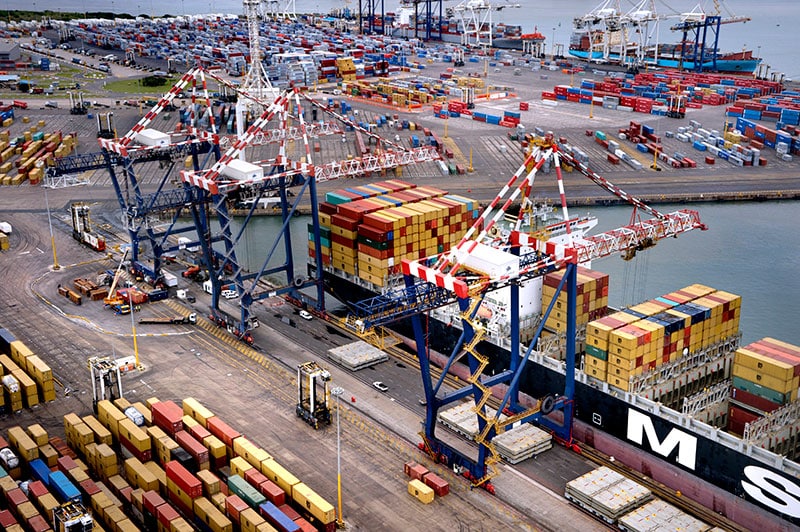South Africa’s container ports recorded stronger-than-expected performance during the week of August 4–10, according to the latest Cargo Movement Update (CMU) compiled by the South African Association of Freight Forwarders (Saaff) and Business Unity South Africa (Busa). The data shows that the country’s ports handled an average of 13,121 twenty-foot equivalent units (TEUs) per day over the seven-day period, outperforming projections and marking an average daily improvement of 14.75% for Transnet Port Terminals (TPT). This translates to about 1,683 additional container moves every 24 hours compared to the previous week, underscoring a positive trend despite ongoing operational challenges.
Among the ports, the container terminal at Port Elizabeth, also known as Gqeberha, emerged as the standout performer. The terminal handled a daily average of 692 TEUs, amounting to 6,826 moves over the week. This represented an impressive 118% week-on-week increase, reflecting improved operational efficiency and possibly better weather conditions during the period. Durban Container Terminal Pier 2 also delivered strong results, averaging 5,471 TEUs per day, with a total of 38,299 moved for the week—a 19% increase from the previous period. Durban Pier 1 recorded a 20% rise, moving 13,167 TEUs, while Ngqura posted a 12% increase, handling 15,071 TEUs for the week.
In contrast, the Cape Town Container Terminal (CTCT) recorded more modest gains. The terminal moved 13,656 TEUs during the week, averaging 1,951 per day, which translated to just a 0.2% week-on-week increase. According to Jacob van Rensburg, Head of Research and Development at Saaff, throughput growth was encouraging overall, but delays still occurred due to familiar operational constraints. These included inclement weather, vacant berths, and equipment breakdowns, all of which continued to affect port efficiency.
Cape Town’s performance was particularly affected by vessel ranging, high swells, and adverse weather, which slowed operations. In Durban, the combination of equipment failures and bad weather presented the main hurdles. Meanwhile, Eastern Cape ports experienced disruptions from strong winds and vacant berths, adding to the challenges. These issues highlight the ongoing vulnerability of South Africa’s port operations to both environmental factors and infrastructure reliability.
While the week’s results indicate progress, especially in Gqeberha and Durban, they also underline the importance of ongoing investment in port infrastructure and equipment. Overcoming weather-related disruptions and technical breakdowns will be critical for sustaining higher throughput levels and meeting the demands of South Africa’s trade sector in the months ahead.


